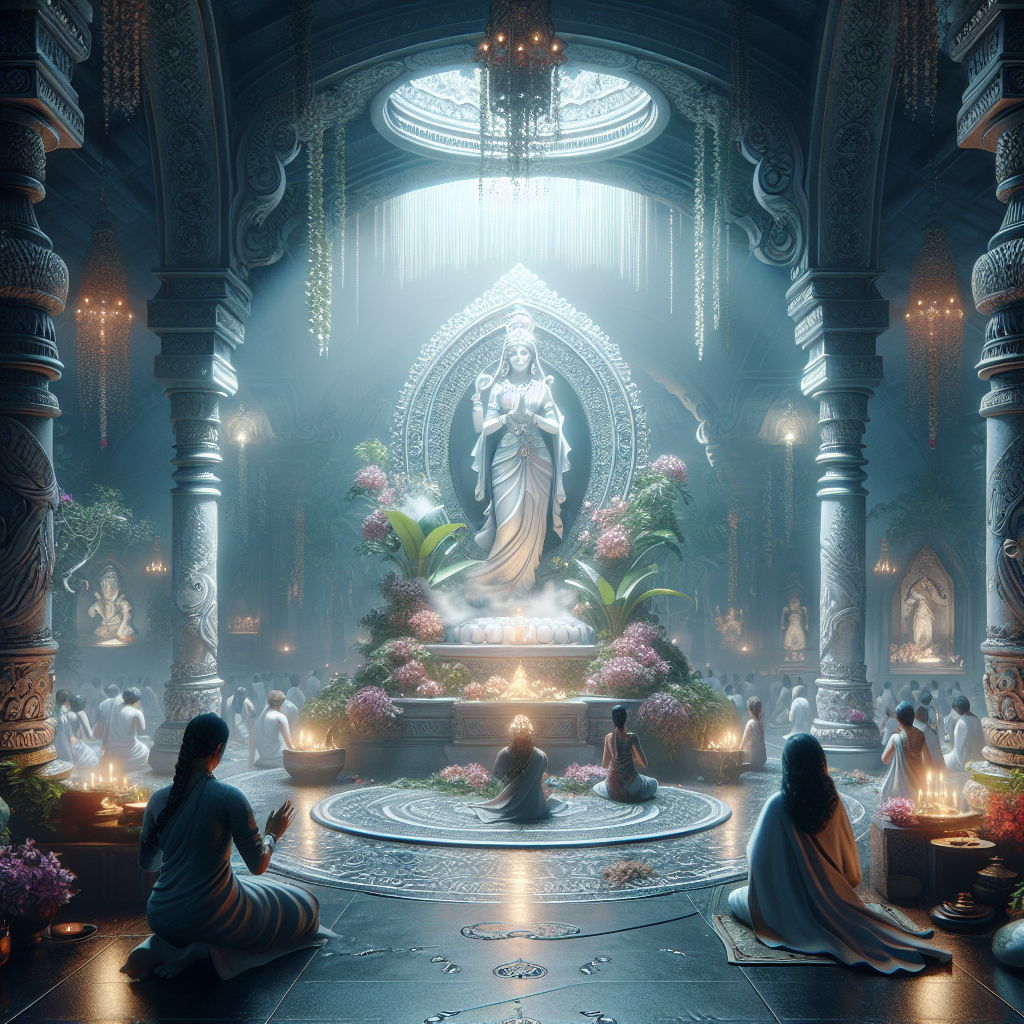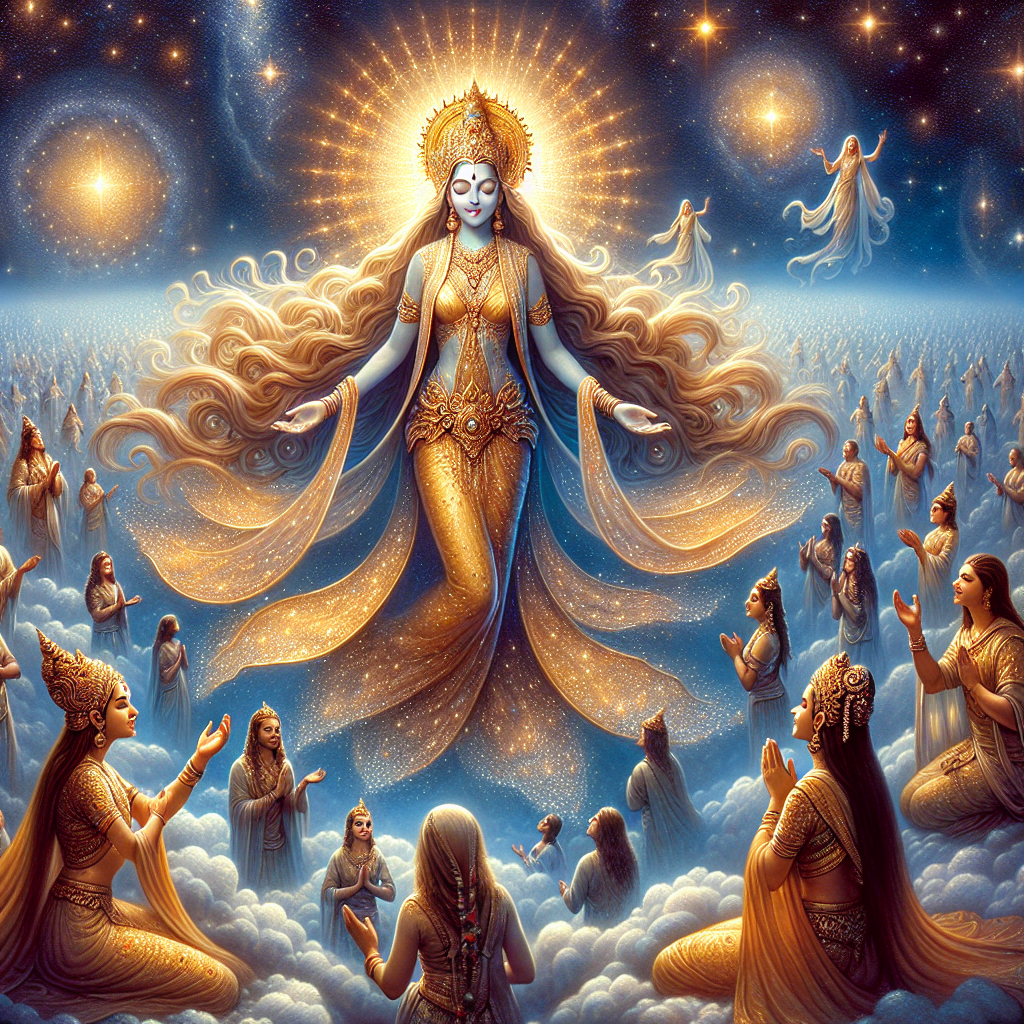As an Amazon Associate I earn from qualifying purchases.
↻
Last updated: December 24, 2025

Well into the 21st century, at a time of rapid technological progress, a not-so-surprising fact emerges: the ancient practice of Goddess worship, within the context of modern witchcraft, continues to thrive. While many may associate witchcraft with the dark and sinister interpretations of pop culture, the reality paints a different, more nuanced image. In a world bustling with scientific advancement and technological marvels, there still exist sincere devotees who take solace in ritually expressing their reverence to the divine feminine. These adherents, often identifying as witches, represent a modern iteration of Goddess worship that weaves historical traditions into a contemporary form of spirituality.
The practice of Goddess worship—veneration of a divine feminine entity—has origins that reach back to prehistoric times. As society evolved, so did these practices, adapting to changing cultures and beliefs, yet retaining a central theme: reverence for the feminine as divine. In modern times, Goddess worship finds a profound resonance within the realm of witchcraft, an eclectic practice characterized by its emphasis on nature, spirituality, magic, and the interconnectedness of all things. Here, the Goddess is seen not as a literal figure, but rather as a symbol of the innate power, wisdom, and fertility inherent in women and nature.
The modern witchcraft movement, often encompassed by terms such as Wicca, Paganism, or Neopaganism, saw a significant resurgence during the 20th century. Particularly in the wake of second-wave feminism in the 1970s, many women—and men—found in the Goddess a symbol of the empowerment, respect, and equality they sought. In our current era, this focus on the divine feminine remains a profound part of many practitioners' spiritual path, reinforcing the spiritual importance of balance, nature, and the feminine.
Delving into the topic of devotion, a recent survey by the Pew Research Center found that about 0.4% of Americans identify as Wiccan or Pagan, representing over a million individuals who, in one way or another, engage with Goddess worship. Rituals play a crucial part in this engagement. While they can range from the simple lighting of a candle and quiet contemplation to more elaborate gatherings involving chanting, dancing, or even, in some cases, rites of passage like handfastings (marriage), they primarily serve to connect the practitioner with the divine feminine. The goal of these ceremonies can vary, encompassing anything from seeking wisdom or strength, to honoring the seasons and cycles of the Earth.
Interwoven with their rituals and daily lives, modern witches use symbols to represent their devotion to the Goddess. From the appointing of altars with statuary and sacred objects, to the wearing of symbolic jewelry, witches enhance their connection and dedication to their faith. Moreover, despite the solitary component that may at times characterize this path, a powerful sense of community often emerges. Covens, groups of like-minded practitioners, gather to celebrate, support, and learn from each other, strengthening their devotion and understanding of the Goddess. This expression of unity not only supports individual spiritual growth but can also serve as a potent nexus of social and eco-activism.
Ultimately, Goddess worship in modern witchcraft is a rich complex of devotion and rituals that serve to celebrate and connect with the divine feminine. It represents an ongoing, dynamic tradition that, despite its deep roots, continues to evolve and thrive in modern society. Undeniably, it demonstrates the resilient and enduring connection between humanity and the powerful forces of nature and feminine energy that have shaped—and continue to shape—the world.
How is Goddess Worship Practiced in Modern Witchcraft: Exploring Devotion and Rituals?
Goddess worship, prominently found in modern witchcraft practices, is the profound devotion to the divine feminine. Highlighted by a deep reverence of the goddess, this practice provides enlightenment and empowerment through rituals returning to ancient earth-centered spirituality. Witchcraft's goddess worship encompasses a range of practices including, but not limited to; ritualistic offerings, meditation, spellwork, and various ceremonies. The refreshing combination of devotion and rituals create a compelling spiritual practice that offers personal growth and an expansive awareness of the universe. Dive deeper into our discussion below as we further explore and break down the fascinating intricacies of goddess worship within modern witchcraft.
The resurgence of goddess worship in modern witchcraft is a fascinating dimension of contemporary spirituality. This phenomena appeals to people who seek a feminine embodiment of divinity, emphasizing the growing influence of “Dianic” or Goddess-centered traditions, which perceive deity primarily in female forms.
Central to the aspect of goddess worship is reverence for nature and the Earth. Many modern witches see the goddess as the personification of the earth and the universe. The triple Goddess, as maiden, mother, and crone, mirrors the lifecycle of birth, life, and death seen in nature, and reminds practitioners that death is not an ending, but a part of a cycle.
Devotion acts in goddess worship vary from solitary practices to communal rituals. In solitary practices, witches utilize altars, which often feature representations of the goddess, such as statues, paintings, and natural items like stones and shells. Altars also hold ritual tools like candles, cups, and athames (ritual knives) used to invoke the goddess. Prayers, meditation, and spell-casting can take place at these altars, honoring the goddess and seeking her guidance or blessings.
Communal goddess worship may be seen in circles or covens. They might celebrate Sabbats (witch festivals that mark the turning of the year) or Esbats (celebrations of the moon). These gatherings involve singing, dancing, praying, feasting, and the communal casting of spells. Rituals during the gatherings are designed to honor the goddess, often through storytelling of her deeds or aspects, and calling upon her for protection and blessings.
The casting of a circle, invoking the goddess, sharing a feast, and the symbolic representation of her being are the basic structure of common rituals. Many rituals also associate a specific goddess with a particular intention. For instance, invoking the Greek goddess Athena for wisdom or the Norse goddess Freya for love and beauty.
The crux of goddess worship lies in the affirmation of female wisdom and power, a breakaway from dogmatic male-centered religious traditions. The goddess in modern witchcraft has become a symbol of empowerment, individualism, and the divine feminine.
Ultimately, goddess worship is an intimate and deeply personal practice for each witch. Some may include herbalism and kitchen magic as part of their devotion, while others find connection through outdoor rituals in nature. The adaptability of goddess worship also opens the doors for practitioners of all genders, embracing the divine feminine within all of us.
Statistically, it is estimated that the number of Wiccans and Pagans in the United States ranges between 1 to 1.5 million, according to the Pew Research Center's 2014 Religious Landscape Study. With Goddess worship being a significant feature in these traditions, it's a testament to the ongoing relevance and growth of honoring the divine feminine in our modern world.
Q1: Who are the Goddesses commonly worshipped in modern witchcraft?
A: The Goddesses worshipped in modern witchcraft vary widely based on tradition and personal preference, but some of the more commonly revered include Hecate, Isis, Artemis, Freya, Kali, and Brigid, among many others.
Q2: How do I start practicing Goddess worship?
A: Goddess worship typically starts with learning about different Goddesses, choosing one (or more) that resonates with you, seeking connection through meditation/prayer, and making offerings – all within a sacred space.
Q3: What rituals are associated with Goddess worship in modern witchcraft?
A: Rituals often involve casting a circle, invoking the Goddess, presenting offerings, performing spellwork, and a closing ceremony. Rituals might also revolve around the lunar phases, as many Goddesses are intricately linked with the moon.
Q4: Is Goddess worship exclusive to women?
A: No, not at all. While Goddess worship is particularly common among women due to its empowerment of female divinity, many men also find deep connection and purpose in worshipping the Goddess.
Q5: Do I have to choose one Goddess to worship, or can I connect with multiple Goddesses?
A: There's no finite rule on this. Some witches feel called to work with one Goddess exclusively, while others form connections with multiple Goddesses, often aligning their worship with personal needs or the changing seasons.
Q6: Can I practice Goddess worship without identifying as a witch?
A: Absolutely. Goddess worship is not limited to witches or practitioners of witchcraft. If you feel drawn to this divine feminine energy, you can surely incorporate Goddess reverence into your spiritual practice.
Q7: How can I deepen my connection with the Goddess?
A: Regular meditation, offerings, and rituals are a few ways to deepen your bond. Additionally, learning about your chosen Goddess's mythology, attributes, and symbolism can enhance your understanding and connection.
Q8: Are there any books or resources you recommend for learning about Goddess worship?
A: Books like “Drawing Down the Moon” by Margot Adler and “The Spiral Dance” by Starhawk are excellent resources for learning about Goddess worship within the context of modern witchcraft.
Q9: What offerings are appropriate to make to a Goddess?
A: Common offerings include candles, incense, food, personal art or crafts, and acts of service that align with the Goddess's values. It's key to consider the specific preferences and associations of your chosen Goddess.
Q10: What does a typical Goddess worship altar look like?
A: There's no “right” way to set up a Goddess altar. It often includes an image or representation of the Goddess, offerings, candles, and other objects symbolizing her attributes. However, the most important aspect is that it's a space that feels sacred and conducive to connecting with the Goddess.

Conclusion
Goddess worship in modern witchcraft plays a pivotal role, symbolising the divine feminine and the mystical powers inherent in all creation. This practice differs from monotheistic religions, drawing its spirituality from the reverence of the natural world, cycle of life, and the interconnectedness of the universe. Modern witches observe religious rituals for venerating diverse aspects of the Goddess, expressing gratitude, seeking guidance, and invoking her energy for spiritual growth and transformation. They use various methods, such as honoring the goddess in an altar, meditating, chanting, and performing moon rituals.
Moreover, the devotion to the goddess is personalised reflecting the practitioners' spiritual inclination. Each individual can choose which aspect of the goddess they wish to venerate, whether a specific historical goddess or a collective embodiment of divine feminine energy. Goddess worship thus creates a spiritual path that is empowering and liberating, allowing the practitioner to attune intimately with the cosmos' rhythms and cycles. This spiritual practice paves the way for self-awareness, inner peace, and an understanding of one's role in the intricate pattern of life. With its rich symbolism and powerful rituals, Goddess worship symbolizes reverence for Mother Earth, the miracle of life, and the eternal cycle of death and rebirth, fostering a deep connection with the natural world and the mysteries of the universe.
Amazon and the Amazon logo are trademarks of Amazon.com, Inc, or its affiliates.
Continue Your Magical Journey
Free Witchcraft Starter Kit
Get 6 free printable PDFs: grimoire pages, moon calendar, spells, crystals, herbs, and tarot journal.
We respect your privacy. Unsubscribe anytime.
Enhance Your Practice
As an Amazon Associate, I earn from qualifying purchases.

